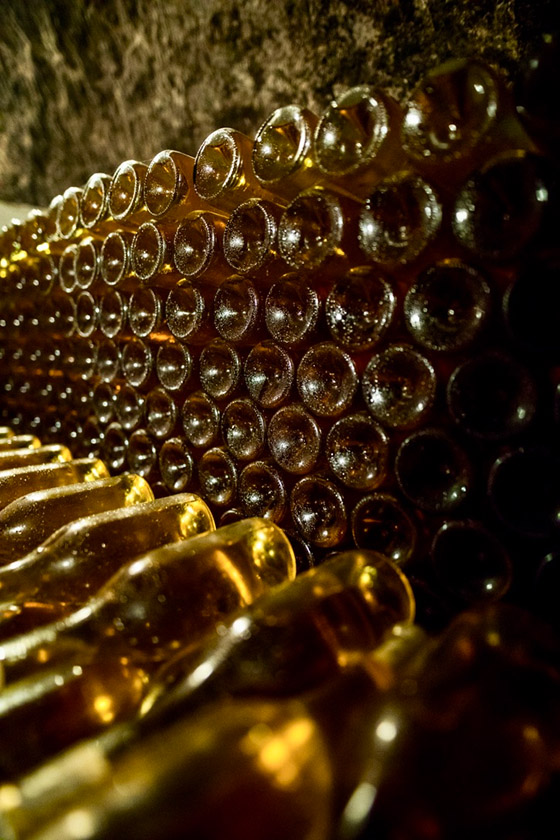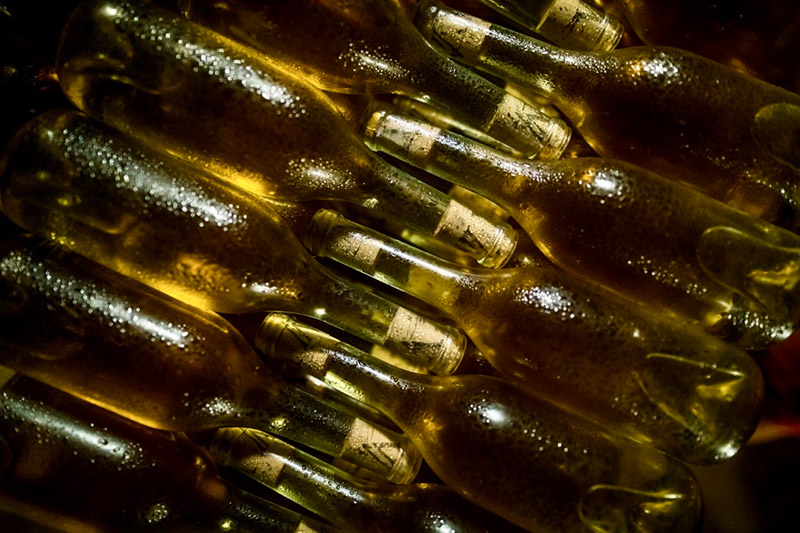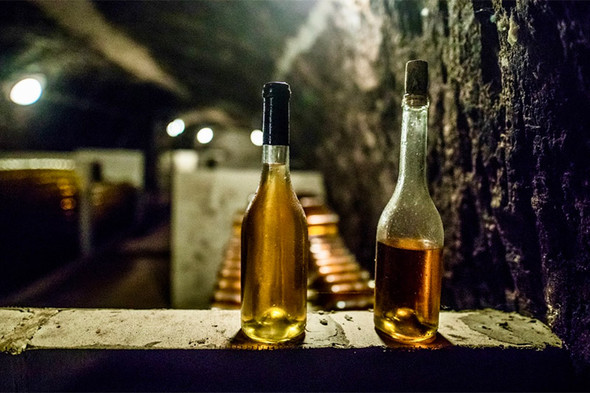Put simply: it was sold in the ‘aszú’ barrel until the second half of the 1800s; merchants transported it largely to Poland, where it was drunk within the year. If not (and there are numerous examples of this amongst archival data), and if they were not handled appropriately, these wines often fermented out to dry (due to this continuous slow fermentation, a natural gas shield was produced over the wine in the barrel, meaning that these Aszús were only minimally oxidised). Subsequently, producers tried to sell the Aszús in bottle, which was a total failure; most bottles exploded en route due to refermentation. The next period saw the stabilisation of Tokaj wines by fortifying with alcohol, along the lines of port. This method was permitted with various interruptions and indeed continued right up to 1990; in the meantime, given the autocratic Soviet-Russian market that was slowly emerging, there was no longer time to wait for the wines to achieve the appropriate barrel ageing, thus barrels were left with some ullage so that the wines oxidised more quickly. This duality, that is, fortification with alcohol and robust oxidation, became commonplace with the arrival of the Russians, and more precisely with the Communist takeover, hence after 1947-1949. After generations grew up with sweet Tokaj tasting of bread-crust and walnut, it’s no wonder that consumption lapsed completely (except in Russia, where, to exaggerate a little, they would drink anything that contained alcohol).

This was followed by the revolution in Hungary, where on the one hand stabilisation with alcohol was once again prohibited (otherwise Tokaj Aszú would not be a naturally sweet wine, but rather in the fortified category), then almost immediately the only possible solution was found, sulphur, (partly) thanks to the large French, Spanish and British investors. This is what Tokaj Aszú came to be like in Hungary, probably more similar to the original than to its oxidative counterparts. According to critics, sulphur is not the problem, rather the excessive use of sulphur, which is, of course, rather a question of taste. It is certainly true that Hungarian Aszús also preserve their primary fruity, citrus character for decades or more thanks to this and only then begin to grow old, while their Slovak counterparts already give the impression of an older Aszú/Vyber as soon as they are launched. Another suggestion was to shorten the barrel maturation, though history provides an answer to this, as it was sold in barrel and drunk within the year. So, fresh. Where was the number of ‘puttony’ + two years specified?

The real question in my eyes is rather that these wines (the Hungarian and Slovak Aszús) are unique from each other; when they are, let’s say, 50, 60 or 70 years old, how different they will be from each other?
It’s a quirk of fate that my question will have to be answered by others, since thanks to human mortality, I won’t be alive long enough to answer it. However, Tokaj is also Tokaj. 600 years of history, golden wines that can be aged for centuries. A wine region that holds you spellbound and captivates you for a lifetime.






